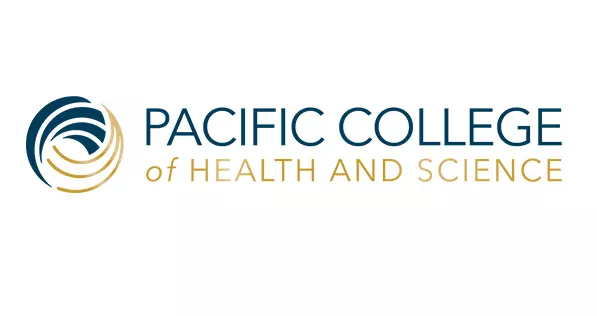The Profession of Oriental Medicine
Traditional Chinese medicine (TCM) is one of the oldest continuous systems of medicine in history, with recorded instances dating as far back as 2,000 years. This is in sharp contrast to the American or Western forms of healthcare, which have been in existence for some 150 years.
Traditional Oriental medicine is a major healthcare system for over 25% of the world’s population. However, the origin and development of the profession of Oriental medicine in the United States has occurred only in the last few decades. In its early stages, the profession established the certification, accreditation and licensure structures to move the profession forward.
This goal has been largely achieved as reflected in the adoption of licensure laws in virtually all states, the recognition of holistic healthcare as a viable healthcare modality in the U.S. and the growing number of third-party payers that offer insurance coverage for Oriental medicine treatments. The National Institutes of Health recognize the usefulness of acupuncture in treating addiction, fibromyalgia, headaches, cramps, back pain, osteoarthritis, carpal tunnel, asthma and much more.
In January 2014, the National Certification Commission for Acupuncture and Oriental Medicine (NCCAOM) reported that there were approximately 30,000 licensed acupuncturists in the U.S. In addition, the majority of U.S. medical schools now offer courses on complementary medicine as well. NCCAOM reported that there are roughly 8,500 students in training as Acupuncturists in more than 60 accredited programs or schools in the U.S.
Alternative healthcare is seeing a jump in patient visits, partially due to a growing awareness of the importance of staying healthy to be happier and ward off illness before it starts. In the United States, there is increasing public awareness of and demand for complementary medicine, including Oriental medicine. According to the “Deloitte 2008 Survey of Health Care Consumers,” 20% of consumers report treating a health problem with an alternative approach to conventional medicine such as acupuncture, while 40% indicate that they are open to doing so in the future.
Reflecting this public demand, the number of the nation’s insurers covering acupuncture treatments almost tripled between 1992 and 2001, rising from 5,525 to 14,228 and the budget of the National Center for Complementary and Alternative Medicine, (a part of the National Institutes of Health), exploded from $2 million in 1993 to $114 million in 2003. According to a nationwide government survey released in December 2008, approximately 38 percent of U.S. adults aged 18 years and over and approximately 12 percent of children use some form of CAM.
Here are some striking statistics:
- Approximately 42% of all Americans are using complementary therapies, spending more than $34 billion annually. This is comparable to all out-of-pocket expenditures for physician visits and exceeds out-of-pocket expenditures for all hospitalizations (Journal of the American Medical Association)
- Nearly one out of every 10 adults in the U.S has tried acupuncture (National Certification Commission for Acupuncture & Oriental Medicine)
- More than one in four Americans report having had a massage from a massage therapist in the past five years, spending a total of between $4 billion and $6 billion on 114 million visits each year (Massage Magazine)
- Modalities such as Oriental medicine have emerged in the U.S. as a sensible alternative to the more commonly practiced, and frequently more expensive, conventional Western medical practices
- 38.1 million adults made roughly 345.2 million visits to alternative medicine practitioners in 2007 (National Health Statistics, 2009)
- Acupuncture has been cited by the World Health Organization (WHO) to treat over 90 conditions (up from 43 in the past)
- The World Health Organization (WHO) conducted a study in 2012 with its member nations, and results showed that 82% of the world’s population uses some form of traditional medicine
- The global alternative medicine sector is expected to reach close to $115 billion by 2015, according to Global Industry Analysts
- Around 75% of the population in emerging nations receives alternative medical healthcare, compared with over half of the population of developed nations, particularly for lifestyle-related diseases (www.reportlinker.com)
- The global herbal supplement and remedy industry is forecast to exceed $105 billion by 2017, according to research from Global Industry Analysts. Market growth is driven by the world’s aging population, increased general awareness surrounding health issues and a lower rate of side effects compared with conventional medicines
- In recent years, massage therapy has reached some of the nations’ top hospitals, including Memorial Sloan-Kettering Cancer Center in New York and Stanford Hospital in California. In 1998, only 7.7% of hospitals were offering complementary and alternative therapies. By 2011, that number had risen to 42% (American Hospital Association)
- Employment for massage therapists is expected to increase 23% from 2012 to 2022, much faster than average for all occupations, according to the U.S. Bureau of Labor Statistics
Doctors, researchers, scientists, insurance companies and patients are coming to the same conclusion: that although still relatively new to the United States, the growing field of Oriental medicine has survived the test of time and is effective in treating illness, ensuring that acupuncture and massage colleges have continued to endure as well.
